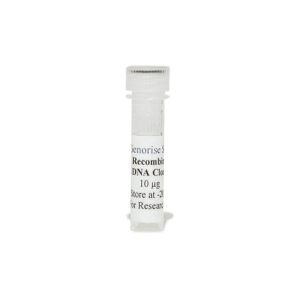Recombinant Human Lp-PLA2 Protein
$99.00 – $456.00
The recombinant human Lp-PLA2 protein is derived from in vitro expression of human Lp-PLA2 gene in E. coli and purified using his-tag affinity column and can be used in multiple applications such as cell culture, ELISA and western blot.
Alternative names for Lp-PLA2: Lipoprotein-associated phospholipase A2 (Lp-PLA2), platelet-activating factor acetylhydrolase (PAF-AH)
This product is for Laboratory Research Use Only not for diagnostic and therapeutic purposes or any other purposes.
- Description
- Product Citations
- Reviews (0)
Description
Genorise Recombinant Human Lp-PLA2 Protein Summary
Alternative names for Lp-PLA2: Lipoprotein-associated phospholipase A2 (Lp-PLA2), platelet-activating factor acetylhydrolase (PAF-AH)
Product Specifications
| Purity | > 97%, by SDSPAGE under reducing conditions and visualized by silver stain. |
| Endotoxin Level | < 0.1 EU per 1 μg of the protein by the LAL method. |
| Activity | na |
| Source | E. coli derived human Lp-PLA2. |
| Accession # | Q13093 |
| N-Terminal Sequence Analysis | Met |
| Amino Acid Sequence | Met33-Asn441 |
| Predicted Molecular Mass | 45 kDa |
| SDS-PAGE | 45 kDa, reducing conditions |
Background:
Lipoprotein-associated phospholipase A2 (Lp-PLA2) also known as platelet-activating factor acetylhydrolase (PAF-AH) is a phospholipase A2 enzyme that in humans is encoded by the PLA2G7 gene.[1][2] Lp-PLA2 is a 45-kDa protein of 441 amino acids.[3] It is one of several PAF acetylhydrolases. In the blood it travels mainly with low-density lipoprotein (LDL). Less than 20% is associated with high-density lipoprotein HDL. It is an enzyme produced by inflammatory cells and hydrolyzes oxidized phospholipids in LDL. Lp-PLA2 is platelet-activating factor (PAF) acetylhydrolase (EC 3.1.1.47), a secreted enzyme that catalyzes the degradation of PAF to inactive products by hydrolysis of the acetyl group at the sn-2 position, producing the biologically inactive products LYSO-PAF and acetate.
Lp-PLA2 is involved in the development of atherosclerosis[3], an observation that has prompted interest as a possible therapeutic target (see, e.g. the investigational drug Darapladib). In human atherosclerotic lesions, 2 main sources of Lp-PLA2 can be identified, including that which is brought into the intima bound to LDL (from the circulation), and that which is synthesized de novo by plaque inflammatory cells (macrophages, T cells, mast cells).” It is used as a marker for cardiac disease.[4] A meta-analysis involving a total of 79,036 participants in 32 prospective studies found that Lp-PLA2 levels are positively correlated with increased risk of developing coronary heart disease and stroke.[5]
References
- Tjoelker LW et al. (1995). Nature 374 (6522): 549–53.
- Tew DG et al. (1996). Arterioscler. Thromb. Vasc. Biol. 16 (4): 591–9.
- Zalewski A, Macphee C (2005). Arterioscler. Thromb. Vasc. Biol. 25 (5): 923–31.
- Mohler ER et al. (2008). J. Am. Coll. Cardiol. 51 (17): 1632–41.
- The Lp-PLA2 Studies Collaboration (2010). The Lancet 375 (9725): 1536–1544.
Product Citations
Be the first to review “Recombinant Human Lp-PLA2 Protein”
You must be logged in to post a review.


























Reviews
There are no reviews yet.